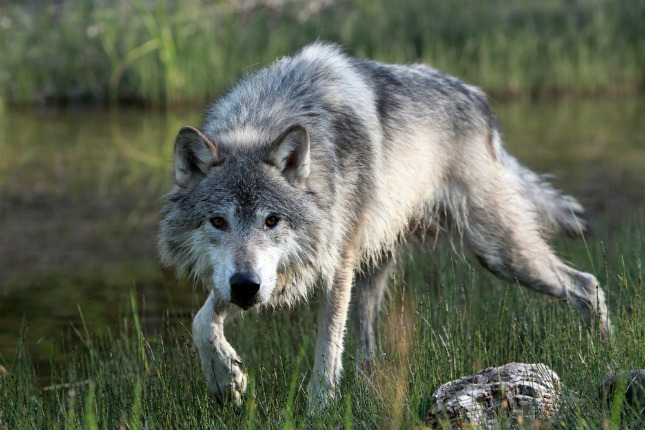Why Wolves Still Need Our Protection
When the U.S. Fish and Wildlife Service reintroduced 66 gray wolves into Yellowstone National Park and adjacent wilderness areas in Idaho back in 1995-'96, conservationists and ranchers squared off across a fence and hurled insults at each other for months.
By then, both sides had had plenty of practice in the art of verbal warfare from previous battles over buffalo harvests and the ever-popular "elk shoots," wherein surplus animals were herded by helicopters into a funnel of "hunters," who thinned the herd back to manageable numbers in a hail of lead. To call that a hunt would be akin to calling Wounded Knee a fair fight. I never met anyone who participated in one of those culling events who wasn't sickened by the slaughter.
When wolves began again to hunt prey in Yellowstone, many ranchers argued that Canis lupus would soon be lining up at their livestock operations like teenagers at a takeout window. Here, for the taking, was an endless supply of Happy Meals.
As mitigation for those meals, the conservation group Defenders of Wildlife has spent $1.5 million (and counting) since 1987 compensating ranchers for their losses—though this has failed to mollify ranchers.
The argument for restoring wolves, however, was unassailable. When the last wolf was finally killed in Yellowstone back in 1926, the elk population soared and the ecosystem fell out of balance. The park's riparian areas and aspen stands were devastated by the 8,000-plus elk herds, and an inventory of the park's wildlife in the early 1970s failed to turn up more than a handful of deer. These, and dozens of other critters, could not compete with the elk.
By the mid-1990s, alarmed biologists told Congress that something had to be done. According to William J. Ripple, a leading researcher on the effect of wolves on the Yellowstone ecosystem who is based at the University of Oregon, bringing back wolves, the alpha predators, was the right move.
Since 1996, Yellowstone's elk population has been cut by two-thirds. The number of beaver and birds has increased, along with deer and red foxes, and the aspen and riparian areas once devastated by overgrazing are making a slow but steady recovery.
But Ripple cautions: "We think this is just the start of the restoration process. We have to sit back and wait for the ecosystem to continue responding. We call this 'passive restoration,' because the ecosystem, with the wolf as a key component at the apex of the predator pyramid, is only now emerging. The aspens, the berry-bearing bushes, the riparian areas, they all seem to be responding, but we went 70 years without the wolves in Yellowstone. ... It's much too early to draw conclusions."
For those and many other reasons, the federal government's decision this summer to remove the gray wolf from the endangered species list was not roundly applauded. Though Dan Ashe, director of the Fish and Wildlife Service, declared the decision to be "the next step forward in wolf conservation," many questioned its wisdom. Anticipating the inevitable storm of controversy, the agency invited the public to weigh in on whether wolves should be removed from the endangered species list. The deadline for comments is Sept. 11.
When Congress removed the Endangered Species Act protections from the gray wolf in 2011, it turned wolf recovery projects over to the states. In minutes, Idaho legalized the hunting of wolves. In two years, 1,175 wolves have been killed by hunters, including 10 "research wolves" that wandered out of protected zones in Yellowstone National Park.
Battles over restoring and protecting salmon and other endangered species have shown—time and again—that politicians can be quick to sacrifice science to political self-interest. At the very least, many conservationists argue that wolves need a large "no-hunting" buffer around Yellowstone Park.
"If the packs are persecuted," Ripple asks, "what will happen to the social structure of those remaining? Do they still provide an ecologically beneficial function? We don't know. This research is in its infancy. We need to err on the side of caution until we learn more about the role of the wolf in these ecosystems."
The basic question remains: As a society, how far are we willing to go and what are we willing to sacrifice to preserve the wild?
–
This news story originally appeared in High Country News.
